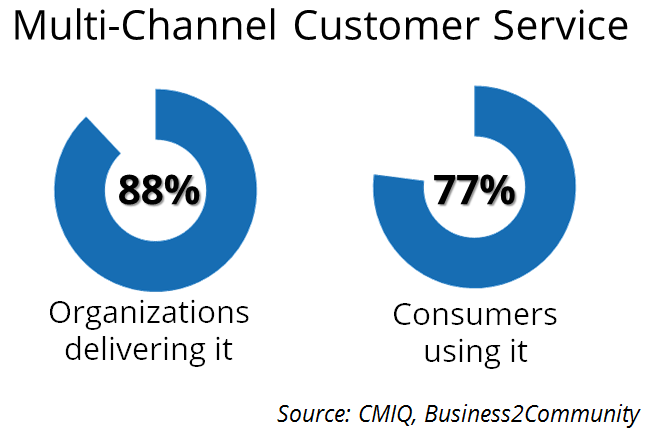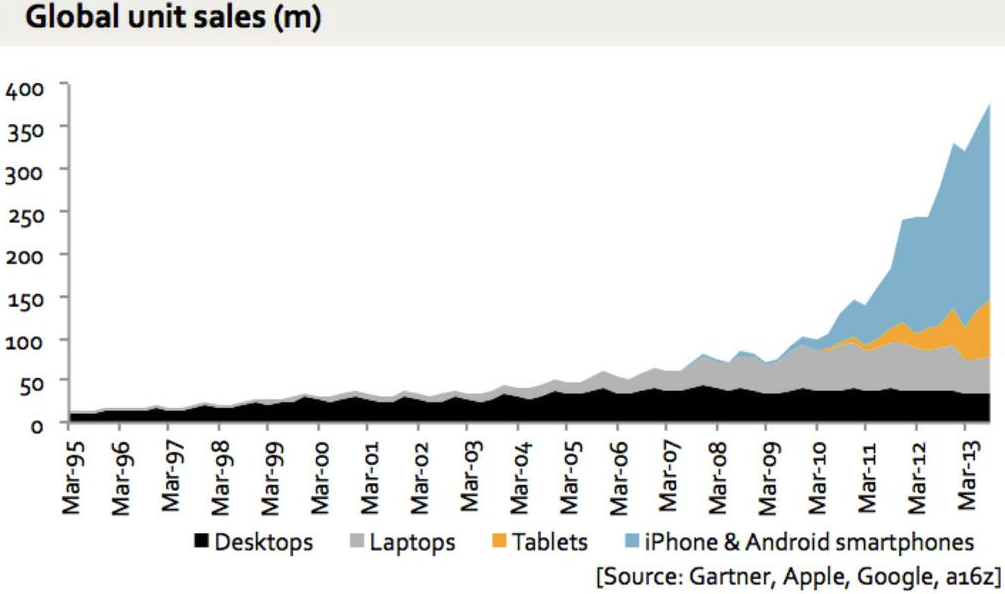For many years, the contact center industry has been using the term “multi-channel” to describe the transition from communicating by phone only, to communicating by email, chat and social media. It was this shift, in fact, that got the “call center” renamed to the “contact center”. (Today, 77% of consumers use more than one channel when seeking service.) In parallel, retailers have been using the term “omnichannel” when talking about how the in-store experience relates to the experience on the phone and through web and social channels.
Those two terms are now colliding. Most physical retail chains have an eCommerce option, and many consumers are using their smartphones while in-store. On top of that, in-store employees are often using the company’s website to field customer questions. Meaning, the online experience is also the employees’ experience, becoming – indirectly – part of the in-store experience. Remember that commercial from the 80’s where chocolate and peanut-butter get mixed accidentally? That’s what is happening to customer engagement: The physical and on-line experiences are getting swirled together.
What’s the Difference?
If you’re confused about when to use “multi-channel” and when to use “omnichannel” don’t worry, you’re in good company. A recent panel of industry experts (organized by [24]7 ) concluded that the meanings are shifting and there is definitely some grey areas.

Elizabeth Herrell, Vice President and Principal Analyst, Constellation Research said there is no “formal distinction”. While, John Bowden, Senior Vice President of Customer Care, Time Warner Cable said,
Multi-channel is an operational view – how you allow the customer to complete transactions in each channel. Omni-channel, however, is … orchestrating the customer experience across all channels so that it is seamless, integrated and consistent.
Dan Miller (one of our “Top Contact Center Analysts to Watch“) said,
Both terms represent visions of the customer care Promised Land… [but] omni-channel is more provocative and perhaps aspirational…
The Smartphone Revolution
Smartphones have radically changed consumer behavior. By 2016, US consumers will own 257M of the devices (according to “Mobile is The New Face of Engagement” by Forrester). Deloitte predicts that within three years “mobile influence” will be directly determining some $689 billion in US retail sales – a number 22 times bigger than anyone’s forecast of mobile e-commerce and more than twice the size of total e-commerce.

If shoppers are in a retail store while using the retailer’s mobile app, they’re simultaneously involved in a physical and digital customer experience. That’s a great opportunity to deliver omnichannel brilliance and win over a customer.
Another aspect of this phenomenon is “showrooming”, where customers use a retail location to appraise an item, but then purchase online from the merchant with the lowest price. For more on this see: “Why Your Retail Business Needs to Deliver the Best Customer Service“.
This is why, ultimately, the terms omnichannel and multi-channel will be indistinguishable.
Where Do You Put the Focus?
With so many channels of communication in the mix, your organization will spread itself too thin if you try to cover every option. Look at your demographics and their behavior to know where to invest your effort. Luckily you don’t have to do all the research yourself. Forrester’s Kate Leggett (another one of our “Top Contact Center Analysts to Watch“) said in her most recent study on channel choices:
“Focus on deploying communication channels that your customers want to use, and that are consistent with your value proposition to your customers. ”
That study also includes these 4 points:
- Consumers want to use more, rather than fewer communication channels for customer service.
- Consumers are using a set of new channels were not statistically significantly used 3 years ago. For example, SMS, click to call, screen sharing, virtual agents
- Online and digital communication channels are becoming increasingly utilized for customer service
- Voice is still the most widely used channel, with a 73% utilization rate. This percentage has not changed in the last 3 years.
I added the emphasis on that last point since I think I believe it is a crucial finding regarding the importance of the voice channel.
What Does this Mean for the Voice Channel?

Despite these massive changes in how customers interact with companies, research shows that the phone is still the most important channel when it comes to customer satisfaction. In addition to the data point from Ms. Legett above, we also have data from the Contact Center Satisfaction Index (CCSI) which studied the change in channel preferences over between 2012 and 2013. While email popularity dropped from 14% to 9%, the phone channel remained unchanged.
Still unconvinced? Check out our earlier posts Why Focusing on Voice is the Key to First Call Resolution and Which Contact Center Technology Really Impacts Customer Service? One Chart Says it All“.
Bottom Line: Do Voice Right!
Both the CCSI study and the Kate Leggett report point to the same conclusion: Contact centers have to do voice right! That is, they need to make sure that customers can connect to agents in an efficient, pain-free way. For starters, make sure you don’t leave callers on hold for more than 60 seconds. If you don’t have the staff levels to meet that level of responsiveness, you should give your callers the option of a call-back.

The bottom line is that the multi-channel / omnichannel nature of the customer experience is already reshaping the industry, and will continue to do so. Decision-makers need to embrace this change and prepare their organizations to be masters of every channel.

Discover the Contact Center Trends That Matter in 2024
Dig into industry trends and discover the changes that matter to your business in the year ahead.